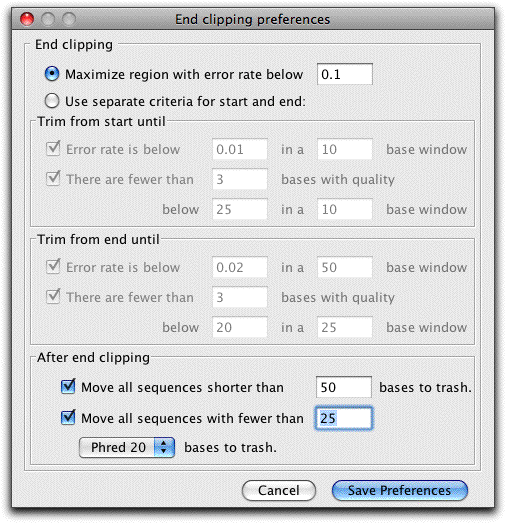Sequence Trimming with CodonCode Aligner
End Clipping: Automatically Remove Low-Quality Sequence Ends
CodonCode Aligner automatically removes the low-quality sequence at the start and end of sequences by using sequence quality scores to identify the low-quality regions. For sequence traces that do not have quality scores (also called "Phred scores" or "confidence values"), CodonCode Aligner lets you use the base calling program Phred to assign sequence qualities with a simple mouse click.
End clipping will remove low-quality regions from the ends of your sequences. CodonCode Aligner allows you to control the stringency of this process through a variety of end-clipping parameters:

You also have the option to automatically move sequences that are too short after end clipping, or that do not have a minimum number of high-quality bases, to the trash (from which you can recover them later, if necessary).
Vector Trimming
Vector sequences in your sample sequences can lead to incorrect assemblies, and therefore should be trimmed before assembly or alignment. CodonCode Aligner lets you define which vector sequences you used in your cloning, and automatically remove vector contamination from the start and the end of your sequences. You can set a minimum number of bases required after vector trimming, and automatically move shorter sequences to the trash.
One Step Processing
While you can perform the "pre-processing" steps of end clipping and vector trimming separately, this can become tedious when working with many samples or projects. CodonCode Aligner gives you the option to do end-clipping, vector trimming and the assembly with a single mouse click through the "Assemble with Preprocessing" option in the "Advanced Assembly" submenu (or, if when aligning your sequences to a reference sequence, "Align with Preprocessing" in the "Advanced Alignment" submenu).
In addition to end clipping and vector trimming, you can also choose to automatically base call sequence traces that do not have quality scores, and to detect heterozygous insertions and deletions (indels).
